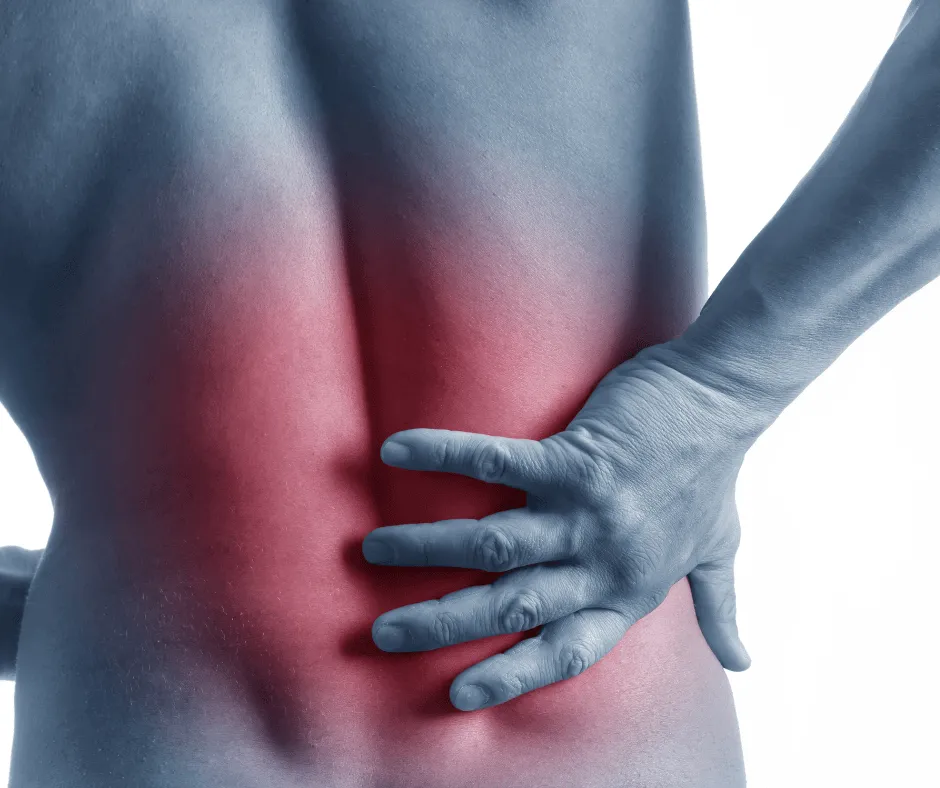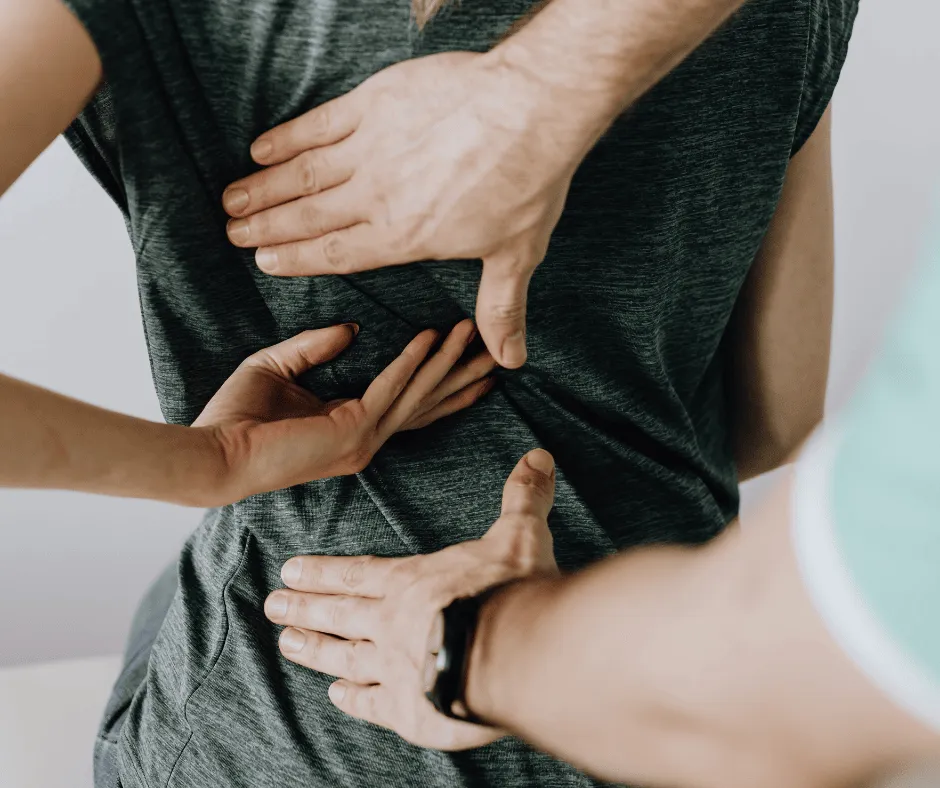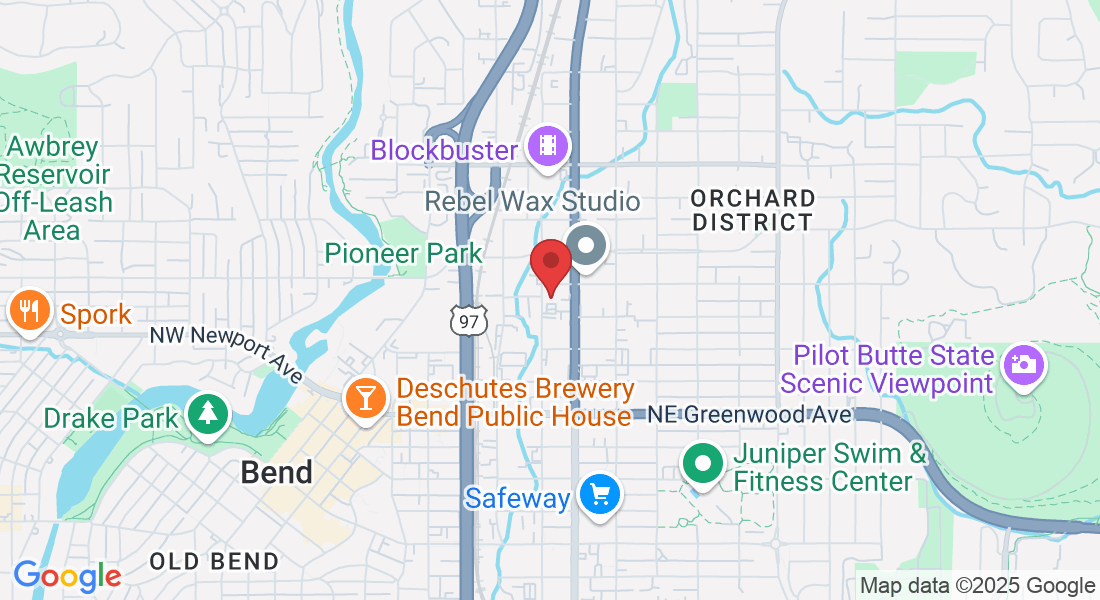Back Pain Relief
Reclaim Your Life, Free from Back Pain
Welcome to your journey towards freedom from back pain. One of the prevalent health issues in the United States is back pain, manifesting itself in various forms ranging from a persistent, mild ache to an abrupt, acute pain that might radiate down your leg. Back pain can be triggered by sudden incidents like accidents, falls, or lifting heavy objects, but it can also gradually develop due to age-induced changes in the spine. Sometimes, medical conditions such as inflammatory arthritis disorders are the culprits behind this pain.
Understanding the intricacy of back pain and its myriad causes, we at PhysioFit advocate for a multi-pronged approach to treatment. With each patient's unique path to relief in mind, we use evidence-based, fitness-centered physical therapy to offer personalized care. Our commitment is not only to alleviate your back discomfort but also to help you adopt measures that enhance your overall well being, thereby reducing the risk of chronic or prolonged pain, and enabling a swift return to your daily activities.
What You Should Know
Acute Back Pain: This is a sudden onset of discomfort that usually lasts from a few days up to a few weeks. Acute back pain is often the result of an accident or sudden physical strain.
Subacute Back Pain: This form of back pain can either come on abruptly or develop gradually over time, typically lasting from 4 to 12 weeks. It may be caused by an injury or overuse of the back muscles.
Chronic Back Pain: Characterized by discomfort lasting more than 12 weeks and occurring daily, chronic back pain may manifest quickly or slowly. It's often associated with degenerative conditions, such as arthritis or disc disease.
A proper diagnosis of a back problem involves a thorough evaluation from a professional.

The Most Common Causes of Back Pain
Back pain can emanate from a diverse array of factors, often intertwining and collectively leading to chronic lower back pain. These factors span mechanical or structural issues with the spine, inflammatory conditions, and other medical disorders. In some instances, it may even be challenging to pinpoint a definite cause for the onset of back discomfort.
Back pain may arise due to mechanical or structural irregularities within the spine, discs, muscles, ligaments, or tendons in the back, or due to nerve compression.
Sprains: These injuries affect the ligaments that provide support to the spine, connecting various bones together. Sprains often occur due to improper twisting or lifting.
Strains: These refer to injuries to a muscle or tendon, which can lead to significant back pain.
Degenerative disc disease: Aging leads to a gradual breakdown of the discs situated between the vertebrae of the spine. This condition is often associated with other degenerative spinal changes, such as arthritis or spinal stenosis.
Herniated or ruptured discs: These conditions occur when a disc compresses and irritates adjacent nerves, usually at the lumbar level but it can also affect the cervical spine.
Spondylolisthesis: This condition is characterized by a vertebra in the spine slipping out of its place or slowly misaligning.
Fractured vertebrae: Fractures of the spinal bones can be a significant source of back pain.
Scoliosis or other congenital changes to the spine: Birth defects and developmental abnormalities like scoliosis can lead to chronic back discomfort.
Myofascial pain: This condition refers to the tightness and pain in the muscles supporting the spine, which could result from muscle damage or from nerve input to the muscles originating from the spine.
As for inflammatory conditions, they also play a significant role in back pain:
Ankylosing spondylitis: This is a specific type of arthritis that affects the spine, causing stiffness and discomfort.
Other Medical Conditions that can cause back pain:
Osteoporosis, Fibromyalgia, Kidney Issues, Endometriosis, Spinal Infections, Tumors, Pregnancy.
Remember, if you resonate with any of the symptoms or conditions mentioned, we highly recommend making an appointment with us for a thorough evaluation and personalized treatment plan.
Proactive Steps for Back Pain Prevention
It's possible to avoid back pain resulting from excessive use or incorrect body movements. Here are some guidelines to foster a healthy back and promote a wholesome lifestyle:
Regular Exercise for a Strong Back: Engage in consistent exercises that fortify your back muscles. Balance-enhancing and strength-boosting activities, like yoga or tai chi, reduce the risk of falls, subsequent back injuries, and bone fractures. Always remember to warm up before any physical activity.
Nutrient-Rich Diet for a Robust Spine: Adopt a healthy diet packed with ample amounts of calcium and vitamin D, the essential nutrients for maintaining spinal strength.
Maintain a Healthy Weight for Stress Reduction: Keep your weight in check. Excess weight can exert unnecessary and harmful stress on your back.
Good Posture for Back Support: Embrace good posture, refraining from slouching. Ensure your back is well-supported while sitting and standing.
Safe Lifting Techniques for Injury Prevention: Evade lifting heavy objects as much as possible. If you have to, rely on your legs and abdominal muscles, not your back.

Common Symptoms of Back Pain
Escalated discomfort when executing lifting or bending movements.
Intensifying pain during rest periods, sitting stances, or when standing.
Rigidity in the morning upon waking, coupled with diminishing back pain upon engaging in activities.
Pain that travels from the back to other areas such as the buttocks, leg, or hip.
Discomfort in your neck, arm, or back
Recurring episodes of back discomfort.
Remember, if you resonate with any of the symptoms or conditions mentioned, we highly recommend making an appointment with us for a thorough evaluation and personalized treatment plan.
Please Note: The information provided on our website is intended for general education and is not a substitute for professional medical advice. Each individual's situation and body is different. Therefore, what may work for one person may not work for another. We care about your well-being and advise you to reach out to us to discuss your specific needs before implementing any advice from our website.
Your Source for All Things Physical Therapy in Bend Oregon
The PhysioBlog

Understanding Anterior Shoulder Pain in Weightlifters and CrossFitters
Anterior shoulder pain is a common complaint among weightlifters and CrossFit athletes, often attributed to a variety of factors. One prevalent issue underlying this pain is weakness in the shoulder external rotators. In fact, many athletes experiencing anterior shoulder discomfort tend to have external rotator strength in the lower 50% when compared to age-related norms. This weakness can lead to improper shoulder mechanics and increased stress on the anterior structures of the shoulder joint, particularly the labrum.
The Role of Shoulder External Rotators
The shoulder external rotators, primarily the infraspinatus and teres minor, play a crucial role in stabilizing the humeral head within the glenoid socket. When these muscles are weak, the humeral head can shift forward, leading to excessive stress on the anterior components of the shoulder. This stress is particularly problematic for the labrum, a cartilage structure that provides stability and cushioning within the shoulder joint.
Biceps Tendonitis: A Common Misdiagnosis
Due to the close proximity of the biceps tendon to the labrum, anterior shoulder pain is often misdiagnosed as biceps tendonitis. The long head of the biceps tendon attaches directly to the superior portion of the labrum, making it a common secondary source of pain. However, in many cases, the labrum itself is the primary pain generator, with biceps tendonitis being a secondary condition arising from underlying labral pathology.
Self-Assessment for Biceps Tendonitis
If you have been diagnosed with biceps tendonitis, there is a simple test you can try to help identify whether your pain is truly coming from the biceps tendon or if the underlying cause may be labral-related. Perform a very heavy bicep curl; if this movement does not exacerbate your pain, it is likely that the biceps tendon is not the primary issue. Instead, the labrum and poor shoulder mechanics may be the root cause of your discomfort.
Addressing the Root Cause
To effectively manage and prevent anterior shoulder pain, addressing the root cause—external rotator weakness—is crucial. Incorporating specific strengthening exercises such as:
• External rotation with resistance bands
• Face pulls to engage the rotator cuff and scapular stabilizers
• Wall walks to emphasize rotator cuff and scap stabilizers
• Isometric holds to improve endurance and stability
Additionally, focusing on better technique during overhead lifts, pressing movements, and Olympic lifts can help reduce strain on the anterior shoulder structures.
Conclusion
Anterior shoulder pain in weightlifters and CrossFit athletes is often linked to inadequate external rotator strength, among other factors, leading to poor joint positioning and stress on the labrum. While biceps tendonitis is frequently diagnosed, it may not always be the true cause of pain. By strengthening the external rotators and optimizing shoulder mechanics, athletes can mitigate pain and improve performance. If you’re dealing with persistent shoulder pain, consider assessing your external rotator strength and seeking guidance from the barbell rehab experts and performance therapists at PhysioFit for a tailored rehabilitation approach.
Copyright PhysioFIT 2025 . All rights reserved


